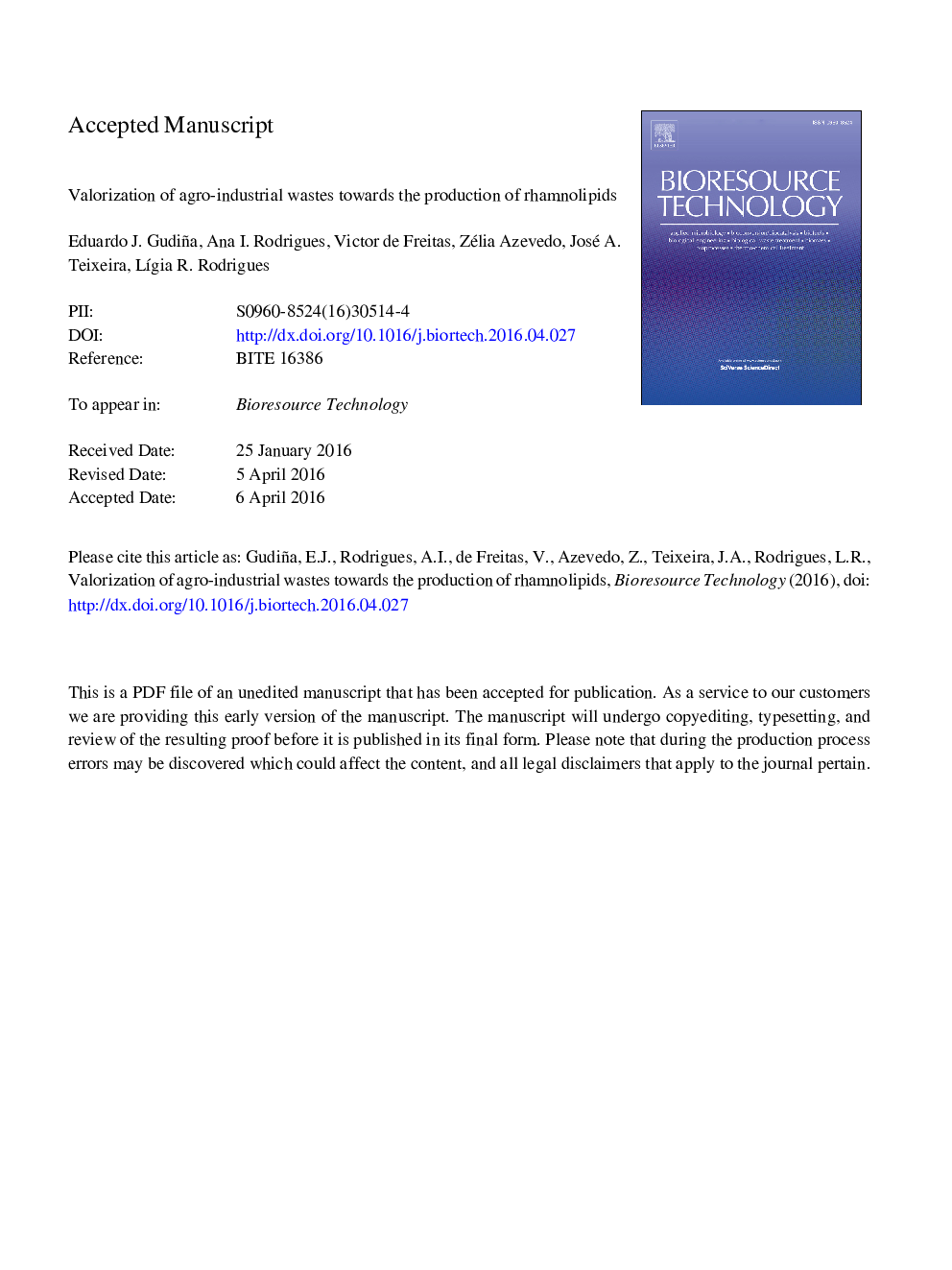| Article ID | Journal | Published Year | Pages | File Type |
|---|---|---|---|---|
| 7071414 | Bioresource Technology | 2016 | 32 Pages |
Abstract
In this work, oil mill wastewater (OMW), a residue generated during olive oil extraction, was evaluated as an inducer of rhamnolipid production. Using a medium containing as sole ingredients corn steep liquor (10%, v/v), sugarcane molasses (10%, w/v) and OMW (25%, v/v), Pseudomonas aeruginosa #112 produced 4.5 and 5.1Â g of rhamnolipid per liter in flasks and reactor, respectively, with critical micelle concentrations as low as 13Â mg/l. Furthermore, in the medium supplemented with OMW, a higher proportion of more hydrophobic rhamnolipid congeners was observed comparing with the same medium without OMW. OMW is a hazardous waste which disposal represents a serious environmental problem; therefore, its valorization as a substrate for the production of added-value compounds such as rhamnolipids is of great interest. This is the first report of rhamnolipid production using a mixture of these three agro-industrial by-products, which can be useful for the sustainable production of rhamnolipids.
Related Topics
Physical Sciences and Engineering
Chemical Engineering
Process Chemistry and Technology
Authors
Eduardo J. Gudiña, Ana I. Rodrigues, Victor de Freitas, Zélia Azevedo, José A. Teixeira, LÃgia R. Rodrigues,
